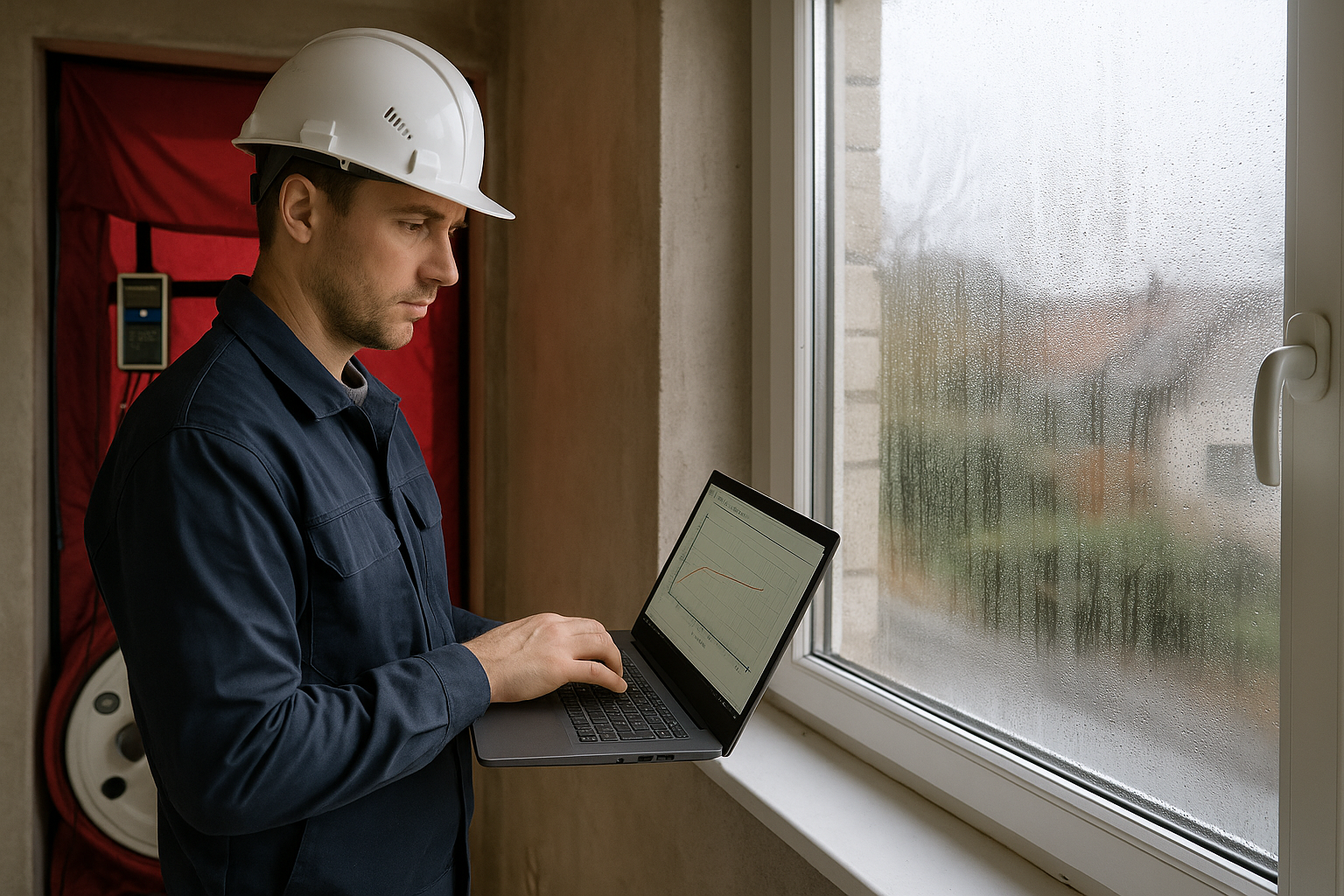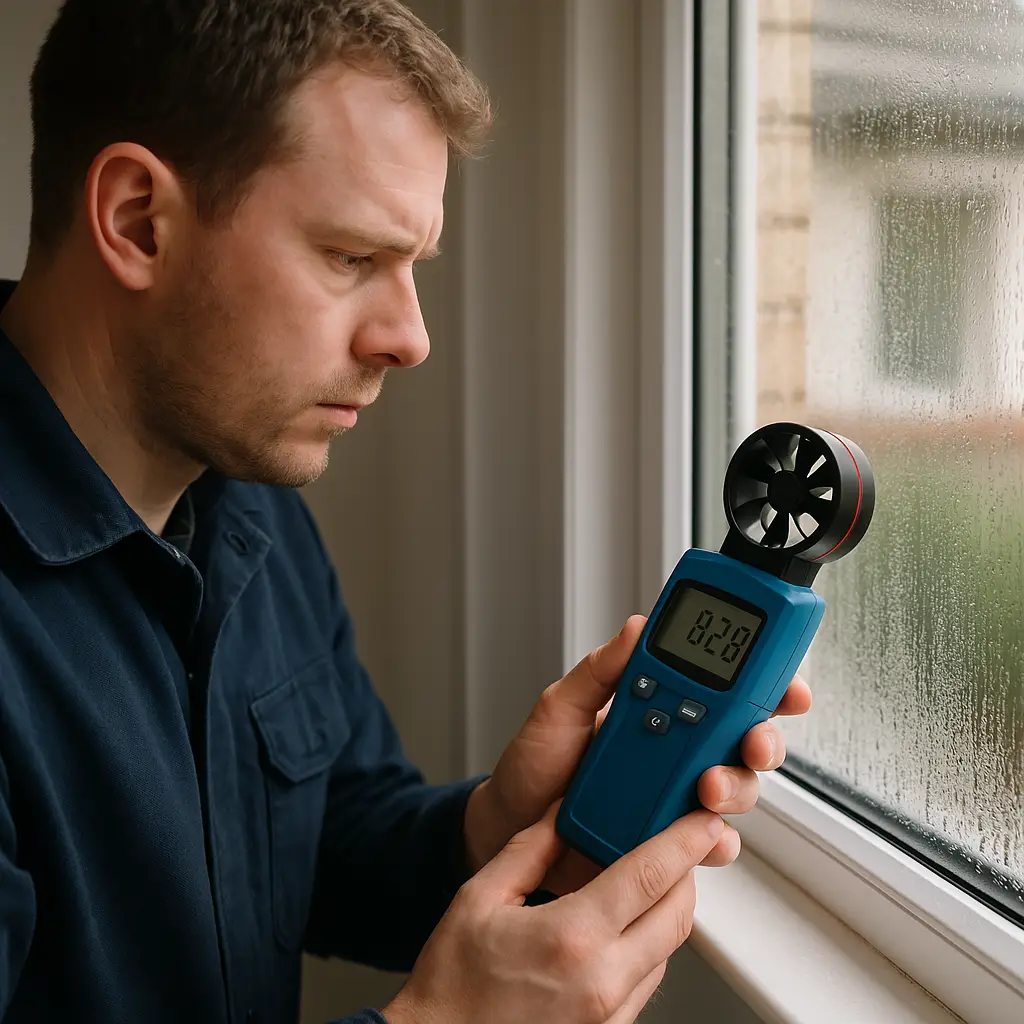Understanding the Critical Relationship Between Airtightness and Condensation Risk in Buildings
The careful balance between airtightness and condensation risk plays a pivotal role in ensuring that a building remains healthy and energy-efficient. Maintaining this balance helps preserve the building envelope’s structural integrity and contributes to the comfort and health of its occupants. Let’s delve deeper into how airtightness interacts with condensation risk and explore best practices for achieving optimal conditions within buildings.
Airtightness and Its Impact on Condensation Risk
Airtightness in building construction is essentially the minimisation of unintentional air leakage through the building envelope. By effectively managing airtightness, builders can significantly reduce the risk of condensation, which, if unmanaged, can lead to severe issues within a building.
Prevention of Air Leakage
- Air Barriers and Vapour Control Layers: Air barriers and vapour control layers like DuPont™ AirGuard® ensure a building’s airtightness by obstructing air leaks. These components act as the first line of defence against the movement of moist air.
- Mechanism of Moisture Transport: When warm, moist air travels through the building envelope, it can cool down and deposit moisture on cold surfaces. Properly installed air barriers prevent such air movement, safeguarding the building from unwanted moisture accumulation and subsequent damage.
Moisture Accumulation
- Interstitial Condensation: If air leakage is not adequately controlled, interstitial condensation can occur. This condition arises when moisture penetrates the building envelope and condenses on cooler internal surfaces. The resulting moisture can lead to materials deteriorating and encourage the growth of mould, posing health risks to occupants and potentially compromising the structural durability of the building.
- Consequences for Occupants and Buildings: Mould growth is not only unsightly but can exacerbate respiratory conditions and allergies in occupants. Additionally, structural elements such as wood, drywall, and insulation can deteriorate over time, leading to costly repairs and hazardous conditions.
Reliability and Failure Modes
The reliability of an airtight building heavily depends on the robustness of the air barrier system. Several factors can compromise its effectiveness:
- Human Error and Construction Defects: Errors during the installation phase or defects in the materials can lead to breaches in the air barrier. These breaches are potential pathways for moisture-laden air, increasing condensation risks.
- Numerical Modelling Studies: Researchers employ numerical models to understand how air barrier failures affect condensation control. These studies provide insights into designing redundant systems that can mitigate the adverse effects of barrier breaches.
- Longevity and Maintenance: Continuous inspections and maintenance are crucial for ensuring the air barrier remains effective over the building’s lifespan. This proactive approach helps identify and rectify potential failures before they become significant issues.
Energy Efficiency and Indoor Air Quality
Airtightness in buildings isn’t only beneficial for condensation control; it also holds substantial advantages for energy efficiency and indoor air quality:
- Minimisation of Convective Heat Loss: With improved airtightness, buildings minimise heat loss through convection, leading to energy savings of up to 75% in some cases.
- Improved Indoor Air Quality: Airtight building envelopes help block outdoor pollutants and contaminants. It maintains a consistent indoor climate, reducing the need for excessive ventilation, heating, or cooling systems.
Best Practices for Achieving Airtightness
- Installation of Continuous Layers: Ensuring that there are continuous airtight and vapour-tight layers, particularly on the warm side of the building envelope, is vital. This practice helps maintain temperature equilibrium and prevents condensation in critical areas such as roof systems.
- Attention to Roof Systems: For tiled or slated pitched roofs, achieving airtightness is crucial irrespective of whether the roofs are ventilated or not. A consistent approach prevents moisture problems and enhances roof longevity.
In summary, airtightness is a critical component in managing condensation risk. It minimises moisture accumulation, enhances energy efficiency, and improves indoor air quality, thereby upholding the health, comfort, and structural integrity of buildings. As a leader in building services, Ratio Seven advocates for these best practices and integrates them into all projects to ensure optimal outcomes.
 FAQs
FAQs
What is the main cause of condensation in buildings?
Condensation primarily occurs due to the temperature difference between indoor and outdoor environments. When warm, moist indoor air comes into contact with cooler surfaces, moisture condenses, leading to potential damp issues. Efficient airtightness and the careful use of vapour barriers can mitigate this risk by controlling the movement of moist air within the building envelope.
How does airtightness contribute to energy efficiency?
Airtight buildings prevent significant heat loss through convective currents, resulting in substantial energy savings and lower utility bills. By preserving indoor temperatures, the need for heating and cooling systems decreases, which enhances overall energy efficiency. Additionally, airtight constructions maintain consistent indoor climates, boosting both occupant comfort and energy performance.
Can airtightness affect indoor air quality negatively?
While increased airtightness reduces heat loss and energy wastage, it’s crucial to maintain adequate ventilation to ensure healthy indoor air quality. This involves a balanced approach where mechanical ventilation systems or strategically placed vents provide necessary air exchanges without compromising energy efficiency. Ratio Seven focuses on innovative solutions that balance airtightness and healthy indoor environments.
Why is interstitial condensation a concern for building health?
Interstitial condensation can lead to severe structural problems. When moisture collects within walls or roofs, it can degrade construction materials like insulation, wood, and drywall. Moreover, it fosters the growth of mould, which can adversely affect indoor air quality and occupant health. Addressing this issue with robust airtight measures is crucial for long-term building health and safety.
By understanding and implementing the principles of airtightness
We can significantly reduce the risk of condensation and create healthier, more energy-efficient buildings that stand the test of time. At Ratio Seven, we are committed to delivering unparalleled expertise and solutions tailored to your building’s specific needs




